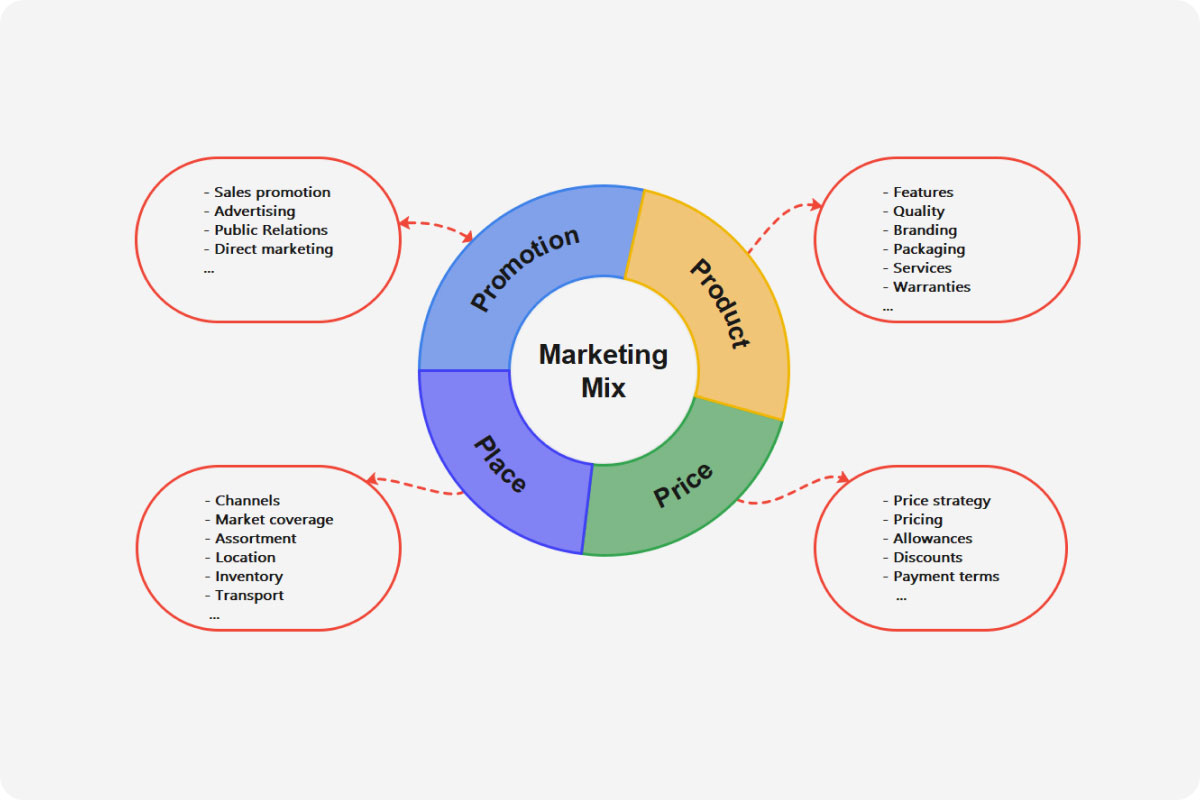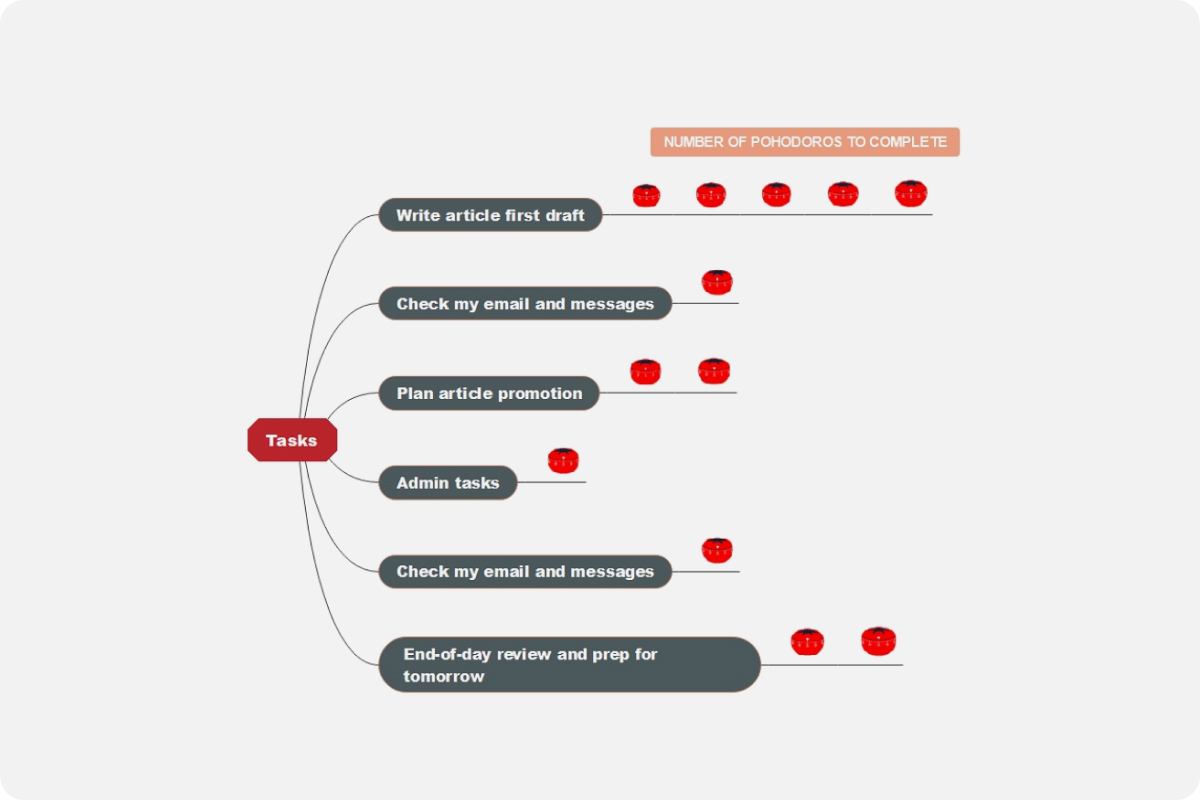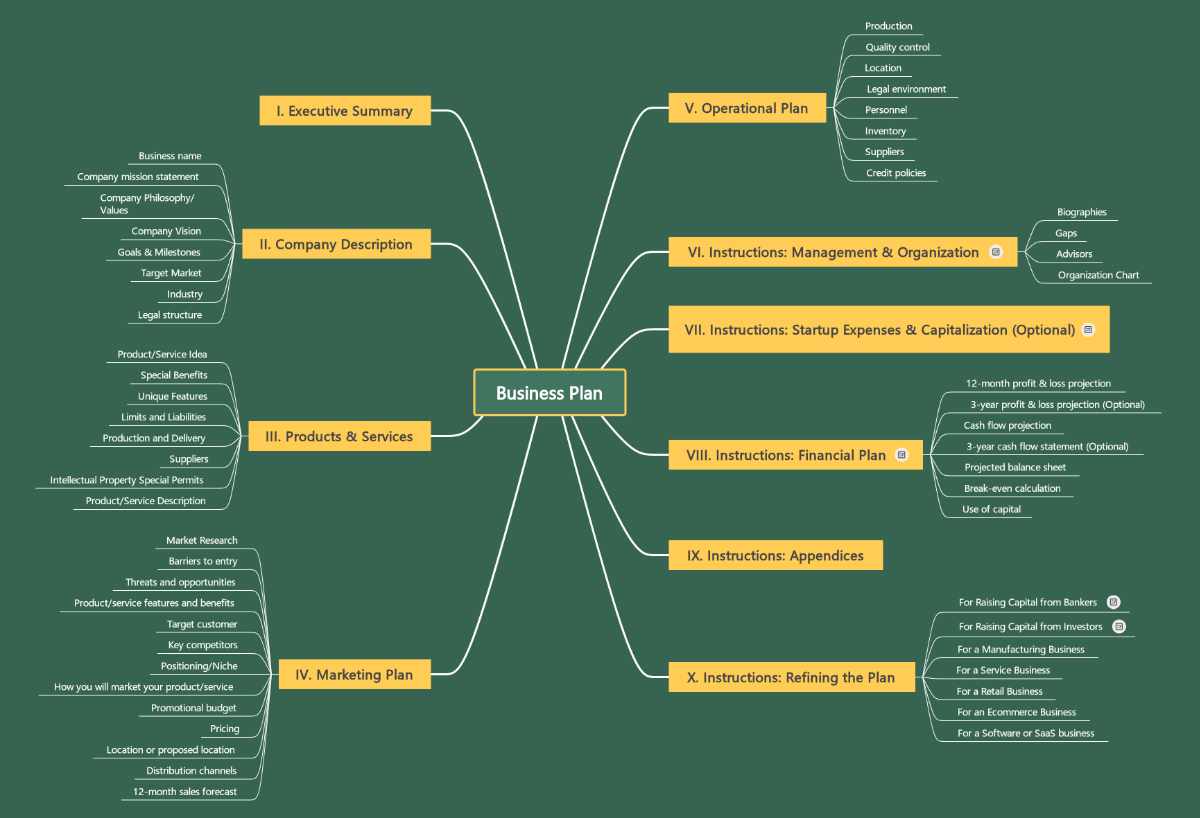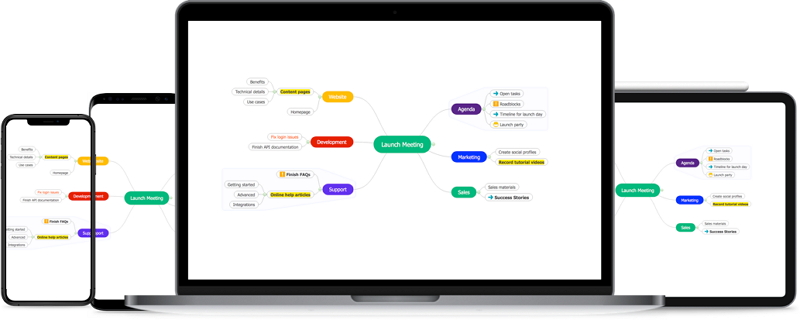Successfully competing in the 21st-century knowledge economy requires individual and team agility in developing ideas and harnessing them for action. Mind mapping is a powerful visual technique that can transform how we think, learn, and collaborate. By organizing information in a nonlinear, radiant structure, mind maps harness the brain’s natural tendency to make connections, spark creativity, and enhance productivity. At its core, a mind map is a diagram that radiates outward from a central topic or idea, with related concepts, tasks, or ideas branching off in all directions. Unlike traditional linear note-taking, mind mapping taps into the brain’s preference for visual processing and association, making capturing, retaining, and applying information easier.
In this article, we delve into the structure of mind maps, highlighting their origins and the compelling benefits of their use. We also highlight EdrawMind, one of the most popular and robust mind-mapping solutions to help build mind maps for collaboration and productivity. Be sure to follow us on LinkedIn. Now, let’s get started.
Origins of Mind Mapping
The origins of mind mapping date back to the late 1960s, when British psychologist Tony Buzan popularized the technique to unlock the human brain’s full potential. Buzan recognized that our minds naturally gravitate toward patterns, images, and nonlinear thinking—qualities that traditional note-taking and outlining often fail to fully leverage. However, in some variations, mind maps have existed for centuries.

Over the past decades, mind mapping has gained widespread adoption across various domains, from education and project management to personal development and strategic planning. The reason for its enduring popularity is simple: mind maps work. Mind maps have become an indispensable tool for individuals and teams by enhancing memory, stimulating creativity, and facilitating holistic understanding.
Mind Mapping for Individuals
The benefits of mind mapping for individuals are numerous and well-documented. Here are three main ways in which mind maps can enhance personal productivity, learning, and self-awareness:
- Improved Memory and Recall: Mind maps’ visual and associative nature taps into the brain’s natural preference for pattern recognition and spatial processing. By organizing information around a central theme, with related concepts branching out in a radiant structure, mind maps make it easier for the brain to store, retrieve, and recall information. This organization can benefit students studying for exams, professionals preparing for presentations, or anyone looking to deepen their understanding of a complex topic. Additionally, mind maps can be highly beneficial when you enter the flow state.
- Fostering Creativity and Idea Generation: Mind mapping encourages a divergent thinking approach, where the mind can explore new connections, generate novel ideas, and make unexpected associations. By starting with a central topic and allowing the map to grow and expand organically, individuals can unlock their creative potential, identify new solutions to problems, and uncover previously overlooked opportunities.
- Enhanced Self-Awareness and Reflection: Creating a mind map can be a powerful tool for self-reflection and personal growth. As individuals map out their thoughts, goals, and priorities, they gain a deeper understanding of their thought processes, values, and areas for improvement. This self-awareness can inform decision-making, facilitate personal development, and lead to more intentional, fulfilling life choices.
On average mind mapping software helps busy executives to be 20-30% more productive in their work.
Mind Mapping for Teams
While the individual benefits of mind mapping are significant, the technique also shines when applied to team-based settings. Here are three ways in which mind maps can enhance collaboration, problem-solving, and collective understanding:
- Facilitating Collective Brainstorming and Ideation: When teams engage in mind mapping together, the process encourages active participation, diverse perspectives, and the cross-pollination of ideas. As team members contribute their thoughts and insights to the evolving mind map, they can quickly identify patterns, make connections, and build upon each other’s ideas, leading to more innovative and comprehensive solutions.
- Improving Project Planning and Coordination: Mind maps excel at visualizing complex information, making them invaluable tools for team-based project management. By mapping out project timelines, task dependencies, and resource allocation, teams can better understand a project’s scope and interdependencies, leading to more effective planning, communication, and execution.
- Fostering Shared Understanding and Alignment: In fast-paced, constantly changing environments, mind maps can help teams maintain a collective understanding of goals, priorities, and strategic direction. By regularly revisiting and updating a shared mind map, team members can ensure they are aligned, identify emerging challenges, and adapt their approach accordingly.
Mind Mapping Models for Brainstorming, Strategy & Planning and Marketing
Mind Mapping Techniques in Key Areas
Mind mapping is a versatile tool that users can apply across various disciplines and use cases. Here are some ways it can be leveraged in three core areas: Brainstorming, Strategy and planning, and Marketing.
Brainstorming
- Sad Glad Mad: This technique involves mapping out emotions associated with a particular problem or idea, helping teams gain a deeper understanding of stakeholder perspectives.
- Mood Boards: Mind maps can help create visual “mood boards” that capture a project or brand’s aesthetic, emotional, and conceptual elements.
- How Now Wow: This framework uses a mind map to differentiate ideas based on their feasibility (How) and potential impact (Wow), enabling teams to prioritize the most promising concepts.
Strategy & Planning
- RACI Matrix: Mind maps can visually depict the Responsible, Accountable, Consulted, and Informed (RACI) roles and responsibilities within a project or initiative.
- Pomodoro Technique: By mapping out tasks and time blocks, mind maps can help individuals and teams apply the Pomodoro time management method more effectively.
- Eisenhower Matrix: Mind maps can define and categorize tasks and priorities based on the Eisenhower Matrix’s four quadrants: urgent/Important, Urgent/Not Important, Not Urgent/Important, and Not Urgent/Not Important.
Marketing
- Customer Journey Map: Mind maps can illustrate a customer’s step-by-step experience, highlighting pain points, opportunities, and the overall path to conversion.
- Voice of the Customer: Mind maps can capture and organize customer feedback, insights, and preferences, informing marketing strategies and product development.
- User Persona Map: Mind maps can guide personalized marketing initiatives by mapping out the demographics, behaviors, motivations, and pain points of target personas.
Mind Map for Global Integrated Healthcare Business Plan
Introducing EdrawMind: A Powerful Mind Mapping Solution
While mind mapping can be done using pen and paper, the digital age has brought forth a range of powerful mind-mapping software to enhance the process. One such tool is EdrawMind, a comprehensive mind-mapping solution offering a suite of features to support individual and team-based mind mapping.
EdrawMind’s intuitive interface and drag-and-drop functionality make it easy for users to create visually appealing, highly customizable mind maps quickly. The software’s robust set of templates, icons, and formatting options allows users to tailor their mind maps to their specific needs, whether outlining a project, brainstorming ideas, or mapping out a complex process.
One of EdrawMind’s standout features is its collaborative capabilities. The software’s real-time synchronization and cloud-based storage enable teams to work on mind maps simultaneously, fostering seamless collaboration and ensuring everyone is on the same page. Additionally, adding comments, attachments, and task assignments to mind map elements enhances the tool’s utility for team-based projects.
Multi-Device Support for EdrawMind
EdrawMind also offers a range of integration options, allowing users to incorporate mind maps seamlessly into their existing workflows. The software’s compatibility with popular productivity tools, such as Microsoft Office and Google Workspace, ensures that mind maps can be easily shared, presented, and incorporated into various work processes.
EdrawMind AI: Powering Visualization
EdrawMind offers some of the most robust features of AI for mind mapping on the market today. Integrating AI functionality enhances the mind map creation processes with speed and insights. EdrawMind AI solutions include:
- MindMap to PowerPoint/Poster: Transform your mind map outline into slideshows or mobile posters with the ability to customize poster themes.
- Mind Map to Video: Save time by creating videos and audio based on Mind Map content and generating scripts for mind maps. This is a great tool for content creators with text-to-speech functionality.
- AI Drawing: Convert text into images and images into works of art as the background and illustrations with 20 pre-set styles.
- Image Text Extraction: The EdrawMind AI OCR tool extracts content and inserts it in your mind map for instances with uncopyable text.
EdrawMind AI Tokens
EdrawMind packages come with a preset number of AI tokens for use with EdrawMind AI. The number of AI tokens used depends on the use case. For example, one token is used for each character (input and output) when grating a mind map. AI tokens are also consumed with OCR functionality, text-to-image/video, etc.
Competitive Analysis: EdrawMind vs. Lucidspark and ConceptDraw
With an estimated 250 million users of mind-mapping software, there is no shortage of mind-mapping solutions on the market. Players like Lucidspark and Concept DrawWhen compared to other popular mind mapping software, EdrawMind stands out in terms of its feature set, ease of use, and pricing:
Features
- EdrawMind offers a comprehensive suite of mind-mapping tools, including advanced diagramming, task management, and collaboration features.
- Lucidspark and ConceptDraw also provide robust mind mapping capabilities, but EdrawMind’s interface is generally considered more intuitive and user-friendly.
- EdrawMind offers robust multi-device versions, including online, desktop, tablet, and mobile.
- EdrawMind offers a broader range of pre-built templates and customization options, allowing users to create highly polished, visually appealing mind maps. Additionally, EdrawMind has built a global community of over 30,000 free user-generated templates available for inspiration. Users can follow template designers for additional inspiration.
- Lucidspark and ConceptDraw have robust collaboration features, but EdrawMind’s real-time synchronization and cloud-based storage may be more seamless for distributed teams.

Pricing
EdrawMind offers a free version with limited features and paid plans starting at $5.99 per month (annual plans) for individuals and $8.99 per month for teams.
- Lucidspark’s pricing starts at $7.95 per month (annual plan/$9.95 monthly) for individuals and $12 per month per user for teams.
- ConceptDraw’s pricing is more complex. Individual licenses start at $199, and the team plans to require custom quotes. For individual plans, additional diagrams and libraries add another $230.
- EdrawMind provides flexible pricing models, including mobile-only, lifetime licenses, and monthly and annual plans.
- Overall, EdrawMind’s pricing is more accessible, particularly for smaller teams and individual users, making it more cost-effective than Lucidspark and ConceptDraw.
Unlocking the Power of Ideation
Finally, mind mapping has emerged as a powerful tool for individuals and teams in an era of information overload and fast-paced change. It can help them navigate complexity, unlock creativity, and enhance collective understanding. By tapping into the brain’s natural tendencies for visual processing and association, mind maps can transform the way we think, learn, and collaborate. When selecting mind-mapping software, design flexibility, creation speed, and collaboration capabilities are key factors.
Whether you’re a student, a professional, an entrepreneur/solopreneur, or part of a dynamic team, incorporating mind mapping into your workflow can lead to tangible improvements in memory, idea generation, project planning, and shared understanding. It remains an essential solution for competitive knowledge workers in the 21st century. With the robust features and collaborative capabilities of tools like EdrawMind, the benefits of mind mapping have never been more accessible or impactful, particularly for users around the globe. As you embark on your mind-mapping journey, the true power of this technique lies in its adaptability and ability to amplify your unique cognitive strengths. By embracing the mind map as a versatile tool for personal growth and team collaboration, you can unlock new levels of productivity, creativity, and collective success.
Visit EdrawMind’s site to learn more. Contact the team at ClearSky 2100 Ventures to discuss mind-mapping strategies for your business or project.
Disclosure: At ClearSky 2100, our portfolio partly consists of affiliate partnerships. We may earn a small commission from buying links on our site at no cost to you.










